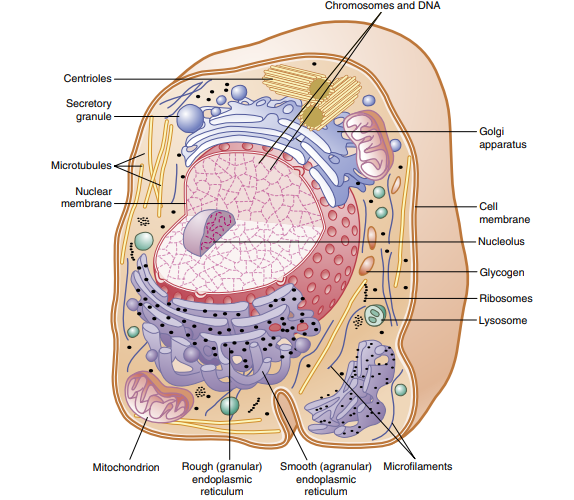Makindo Medical Notes"One small step for man, one large step for Makindo" |
|
|---|---|
| Download all this content in the Apps now Android App and Apple iPhone/Pad App | |
| MEDICAL DISCLAIMER: The contents are under continuing development and improvements and despite all efforts may contain errors of omission or fact. This is not to be used for the assessment, diagnosis, or management of patients. It should not be regarded as medical advice by healthcare workers or laypeople. It is for educational purposes only. Please adhere to your local protocols. Use the BNF for drug information. If you are unwell please seek urgent healthcare advice. If you do not accept this then please do not use the website. Makindo Ltd. |
Cell Biology
-
| About | Anaesthetics and Critical Care | Anatomy | Biochemistry | Cardiology | Clinical Cases | CompSci | Crib | Dermatology | Differentials | Drugs | ENT | Electrocardiogram | Embryology | Emergency Medicine | Endocrinology | Ethics | Foundation Doctors | Gastroenterology | General Information | General Practice | Genetics | Geriatric Medicine | Guidelines | Haematology | Hepatology | Immunology | Infectious Diseases | Infographic | Investigations | Lists | Microbiology | Miscellaneous | Nephrology | Neuroanatomy | Neurology | Nutrition | OSCE | Obstetrics Gynaecology | Oncology | Ophthalmology | Oral Medicine and Dentistry | Paediatrics | Palliative | Pathology | Pharmacology | Physiology | Procedures | Psychiatry | Radiology | Respiratory | Resuscitation | Rheumatology | Statistics and Research | Stroke | Surgery | Toxicology | Trauma and Orthopaedics | Twitter | Urology
🧱 Structure of the Cell Membrane
- The cell membrane (plasma membrane) is a thin, flexible barrier that surrounds the cell. It maintains cell integrity and regulates the movement of substances in and out. Its design is best explained by the fluid mosaic model 🧩, which highlights its dynamic and flexible nature.
- Phospholipid Bilayer: The foundation is a double layer of phospholipids. 🟡 Hydrophilic heads face outward (towards extracellular fluid and cytoplasm). ⚫ Hydrophobic tails face inward, away from water.
- Membrane Proteins: Essential for transport, signalling, and anchoring.
- Integral proteins: Span the entire bilayer; act as channels, carriers, or receptors.
- Peripheral proteins: Loosely attached on the surface; support structure and signalling.
- Cholesterol: 🧴 Scattered throughout the bilayer, it adds rigidity while maintaining fluidity — preventing the membrane from becoming too rigid (at low temps) or too fluid (at high temps).
- Carbohydrate Chains: 🍬 Attached to proteins (glycoproteins) or lipids (glycolipids) on the outer surface. They function in cell recognition, immune defence, and intercellular communication.
- Fluid Mosaic Model: Emphasises that components (lipids, proteins, carbohydrates) move fluidly within the bilayer — giving flexibility, adaptability, and resilience to the membrane.

📌 Teaching Pearl: The cell membrane is not just a “barrier” — it’s an active communication hub, essential for signalling, nutrient uptake, and maintaining ion gradients ⚡.
🌊 Diffusion
Diffusion = random movement of molecules from an area of high concentration ➝ low concentration, driven by kinetic energy. In cells, diffusion allows gases, nutrients, and ions to move across membranes without energy input.
- Simple Diffusion: Passive movement through the lipid bilayer (if lipid-soluble, e.g. O₂, CO₂) or via water-filled channels in proteins. Rate depends on substance concentration, molecular motion, and available openings.
- Facilitated Diffusion: Requires carrier proteins 🚪. The molecule binds to a transporter, which changes shape to shuttle it across (e.g. glucose transport via GLUT proteins).
- Key Point: Both simple and facilitated diffusion are passive processes — no ATP is needed ⚡.
⚡ Intracellular vs Extracellular Electrolyte Concentrations
| Electrolyte/Substance | Intracellular (mM) | Extracellular (mM) |
|---|---|---|
| 🔵 Sodium (Na⁺) | 10–15 | 135–145 |
| 🟢 Potassium (K⁺) | 140–150 | 3.5–5.0 |
| ⚪ Calcium (Ca²⁺) | <0.001 | 2.0–2.5 |
| 🟡 Chloride (Cl⁻) | 4–30 | 95–105 |
| 🟤 Bicarbonate (HCO₃⁻) | 10–20 | 22–28 |
| 🟣 Magnesium (Mg²⁺) | 20–30 | 0.7–1.0 |
| 🍬 Glucose | ~1.0 | 5.0–6.0 |
| 🧩 Amino Acids | 200 | 2.0 |
💡 Clinical Insight: The steep Na⁺ and K⁺ gradients are maintained by the sodium–potassium pump (Na⁺/K⁺-ATPase). This pump is vital for nerve conduction, muscle contraction, and maintaining cell volume. Disturbances in these gradients (e.g. hypokalaemia, hyponatraemia) ➝ severe clinical consequences.